This is getting insane. I realize the appetite to sensationalize but it's getting out of hand. If someone were to industrialize this capacity to inflict civilian damage at scale as is proposed 👇, "D" would be to equally mass produce things like Coyote Blk 2+/Mordecai, & DE sys. 



In the end, what is being pushed here is still fairly limited war winning capability. We are talking about a 50 kg warhead equipped flying moped that is COTS derived and fairly limited in its strike potential against military targets and hard & soft CM's and tactics.
The false comparison being drawn to "Western" air-defense capacity is also completely irrelevant to the discussion. The "Shahed" threat doesn't warrant those capabilities. It warrants equally scaled production of significantly cheaper, and simpler counter measures. 





So yeah, don't give me the BS of limited SM-6, or Aster missile production. It is irrelevant. What's relevant is the number of qualified, and technically capable OEM's in the west who can produce G-3 UAS optimized kinetic or DE interceptors like HPM, Coyote and several others. 





And 👆 you have no shortage. Probably half a dozen- dozen in the US. As many in Europe & Asia. Now add EW, and HPM payloads to these effectors. And layer of DE (HEL & HPM) & factor in offensive capability against this sort of targeting.
Cheap solutions allow cheap CM's 👇
Cheap solutions allow cheap CM's 👇
The current delivery of these Group 3 optimized CsUAS capability emphasizes mil fixed/semi-fixed site defense. But it isn't hard to imagine, that very similar solutions could also support Air-launched intercepts coming off of long loitering MALE RPA's allowing for SO ranges. 
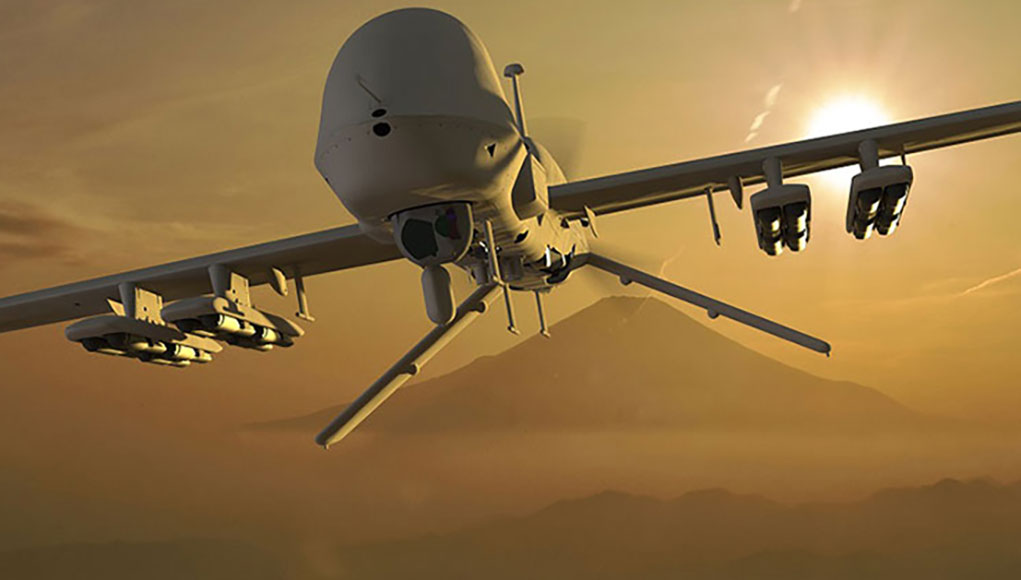
At the end of the day, what needs to be measured is the production capacity or barriers to scaling capacity of relatively simple, COTS based one-way attack drones like the Shahed, and equally simple to manufacture, C-sUAS solutions optimized specifically around G-3 systems.
A $100K missile vs $50K target is cost-effective if your layered approach is aimed at using interceptor for 1 of 2-3 drones with majority being defeated by the DE,EW, or gun layers. Though designed for mil sites, small palletized solutions can easily be emplaced in urban areas. 


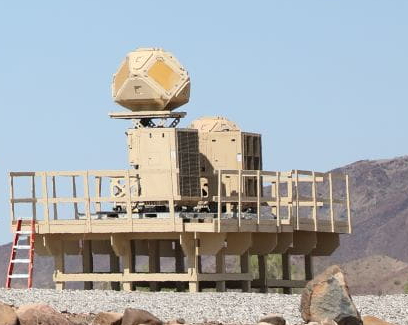
Similarly small palletized directed-energy (HEL) options are available focusing on the small UAS threat. The Army has a few 20kW Locust palletized high energy lasers at Yuma (third 📸). They can be self contained with radar/EO-IR sensors or part of LIDS. These are available NOW. 


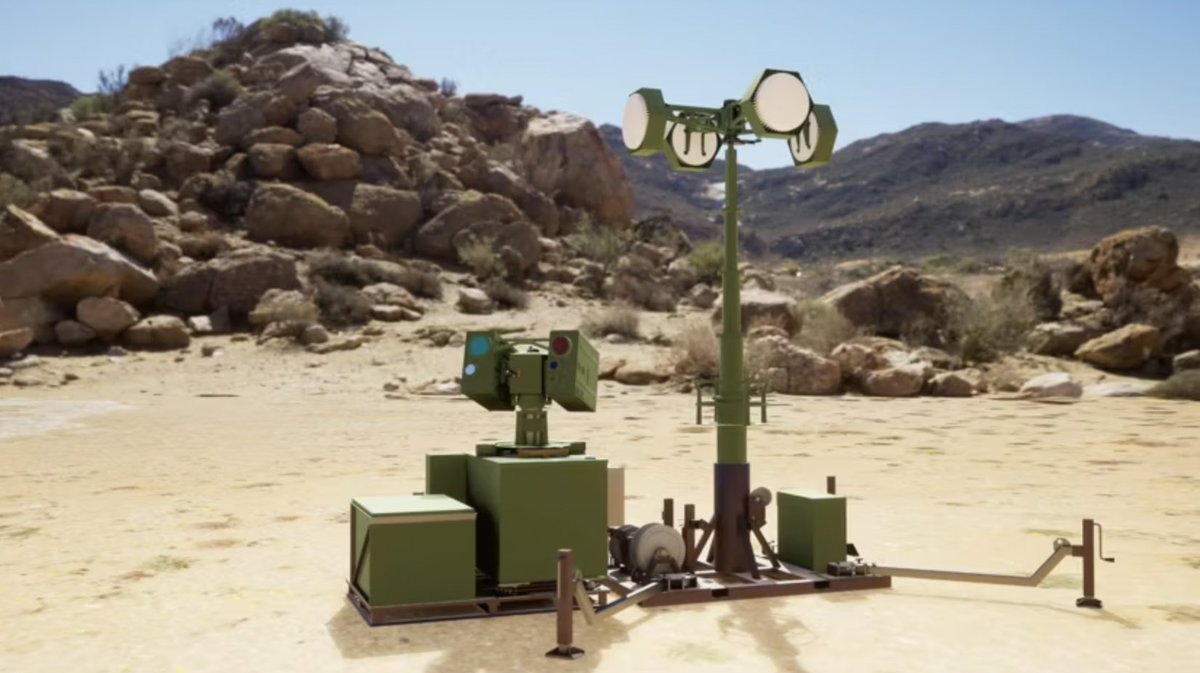
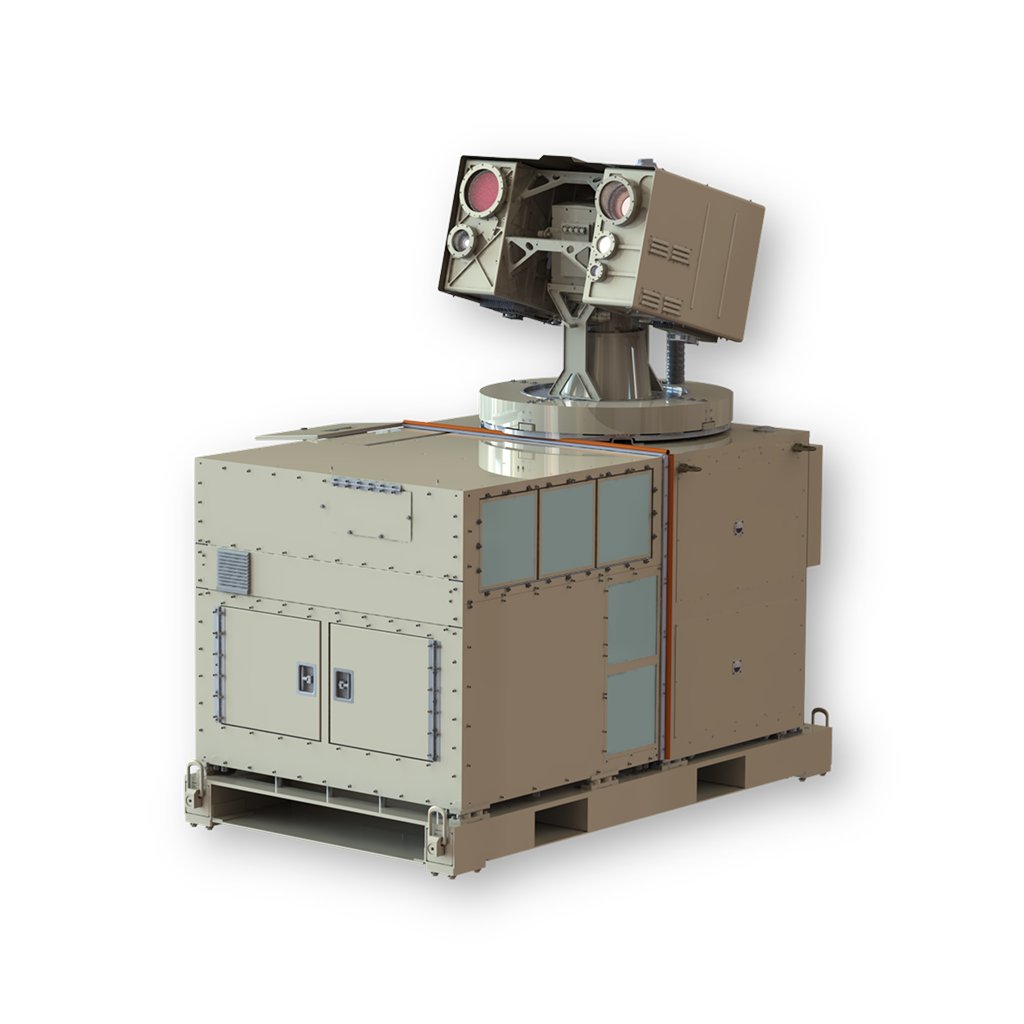
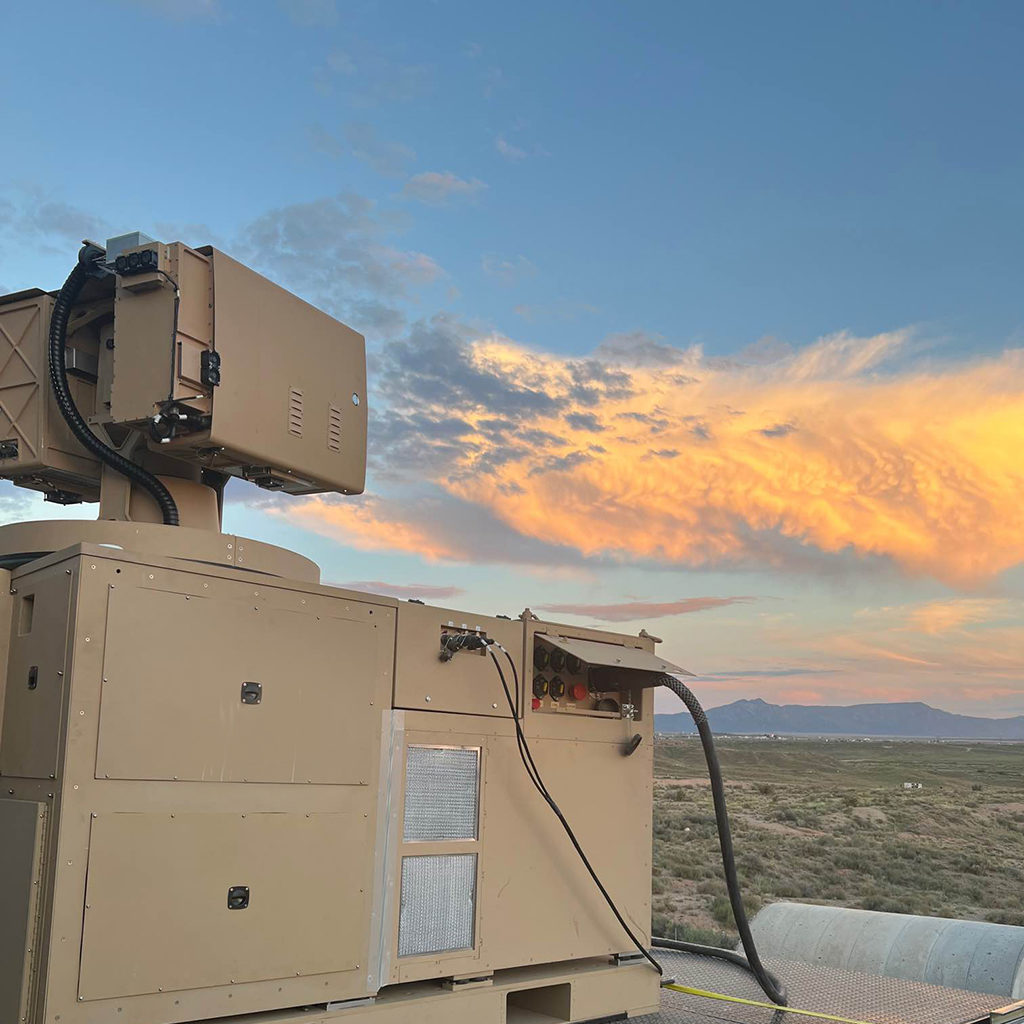
The current FS/M #LIDS system's utilizes the Coyote Block 2+ missile with a range of about 15 km against G-3 UASs. It also includes EW with a range of 8 km & 30 mm chain guns for closer engagements. DE layers are being fielded now and additional missiles will be added as well. 
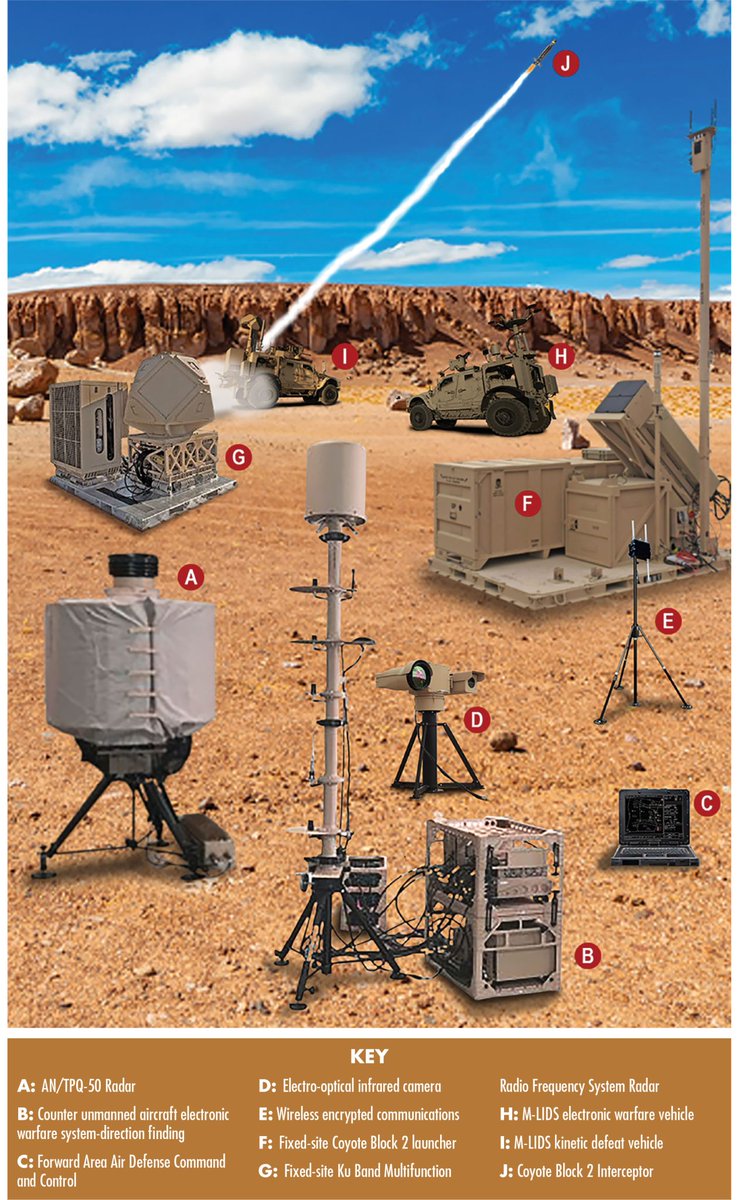
LIDS & its components are highly transportable designed to use standard ISO containers & commercial material handling equipment & PS. While these have been designed around military fixed/semi-fixed site defense, these features allow easy adoption for infrastructure protection. 

Detecting, tracking & FC functions for #LIDS C-sUAS solution comes via 3 primary sensors. Of the 3, the Ku-band Radio Frequency System #KuRFS is most important. KuRFS comes in a larger palletized form and a smaller Ku720 form-factor for mobile applications
Some Specifications 👇
Some Specifications 👇

#KuRFS radars each feature 4 independent #GaN AESA quadrant arrays which operate together to provide 360° coverage. Ku720 quadrant arrays are 1/4 the size of the KuRFS arrays, providing a scaled radar for mobile needs. Both variants share a common software and architecture. 

Fixed Site LIDS also employs the longer ranged AN/TPQ-50 L-band radar. AN/TPQ-50 provides continuous 360-degree surveillance and 3-D target location using a non-rotating, electronically steered antenna. AN/TPQ-50 is eventually going to be replaced by a different flat-panel radar. 

For close in detection, tracking and engagement, the system employs four EO/IR cameras that support both kinetic, and non-kinetic effector engagement. It is used for visual identification confirmation and classification of Group 1-3 targets at ranges up to 10 km. 
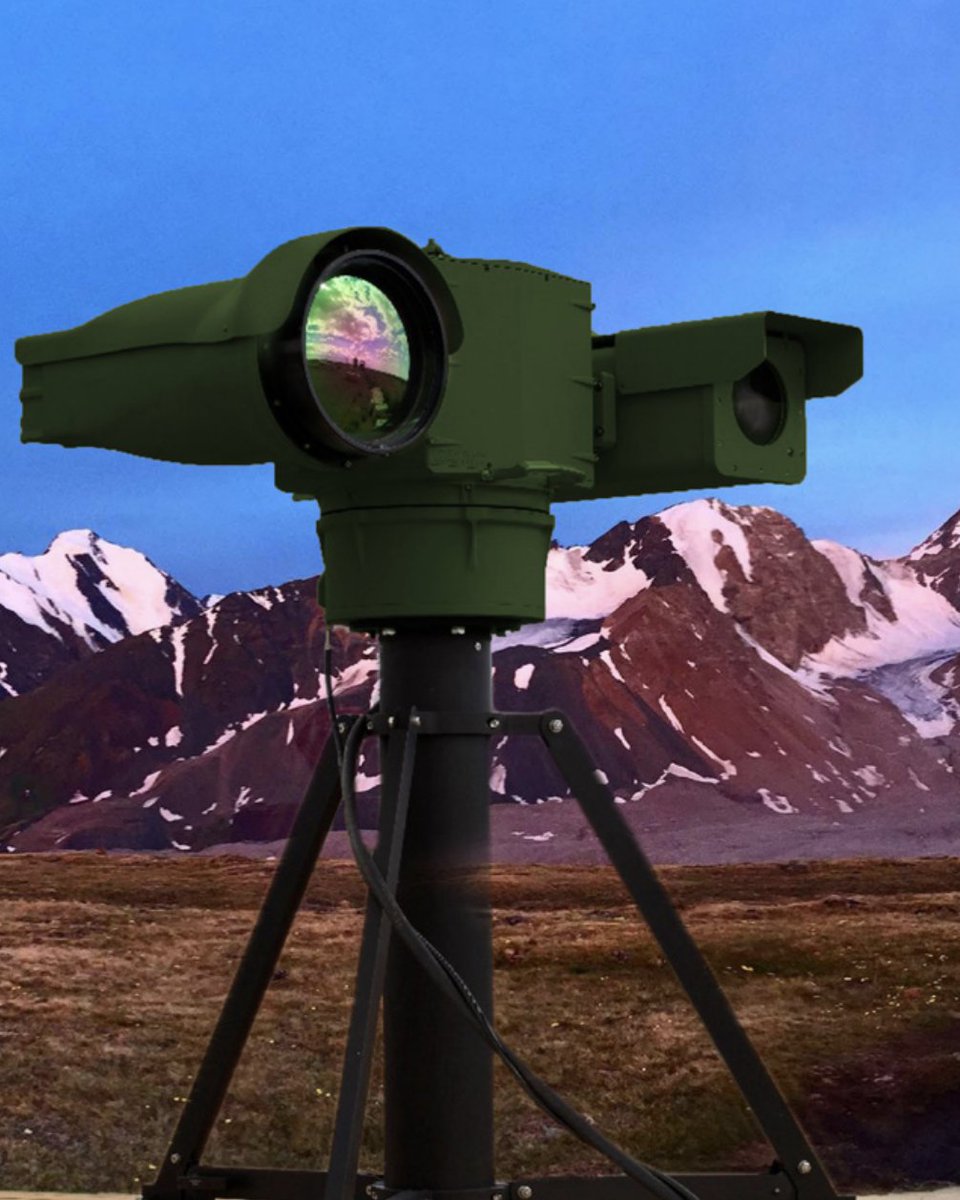
The current Coyote baseline for deployed #LIDS systems is the block 2+ interceptor. Block 2+ Coyote features a C-band data-link, an active RF seeker and carries a tungsten fragmentation warhead developed and optimized for the C-UAS mission. 
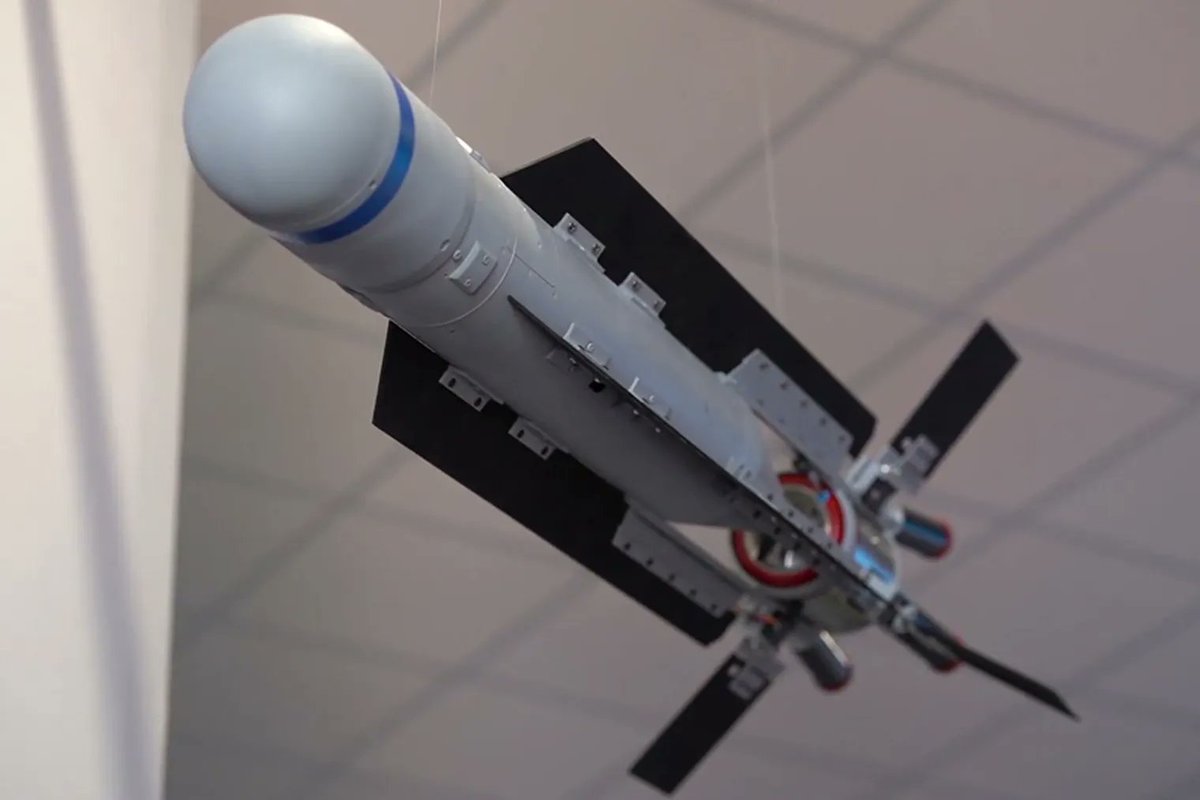
Compared to earlier versions, Block 2+ introduces Air Traffic avoidance to guide around friendly a/c while maintaining track on target. Additional features include auto air termination & ability to loiter with re-engagement. It is capable of 6+G's and speeds exceeding 555 km/hr. 

The Army has recently begun introducing the Block 3 or Mordecai missile into the LIDS division sets. Mordecai replaces the kinetic warhead on the Block 2 with a High-Power Microwave payload that is activated via the included prox sensor. Mordecai is reusable and can engage swarms 

LIDS has been operationally deployed in CENTCOM since 2017 and has been constantly upgraded based on lessons learned & technology maturity. C2 is provided by the reliable FAAD C2. As discussed earlier, major investments are supporting High Energy Laser, and HPM layers. 
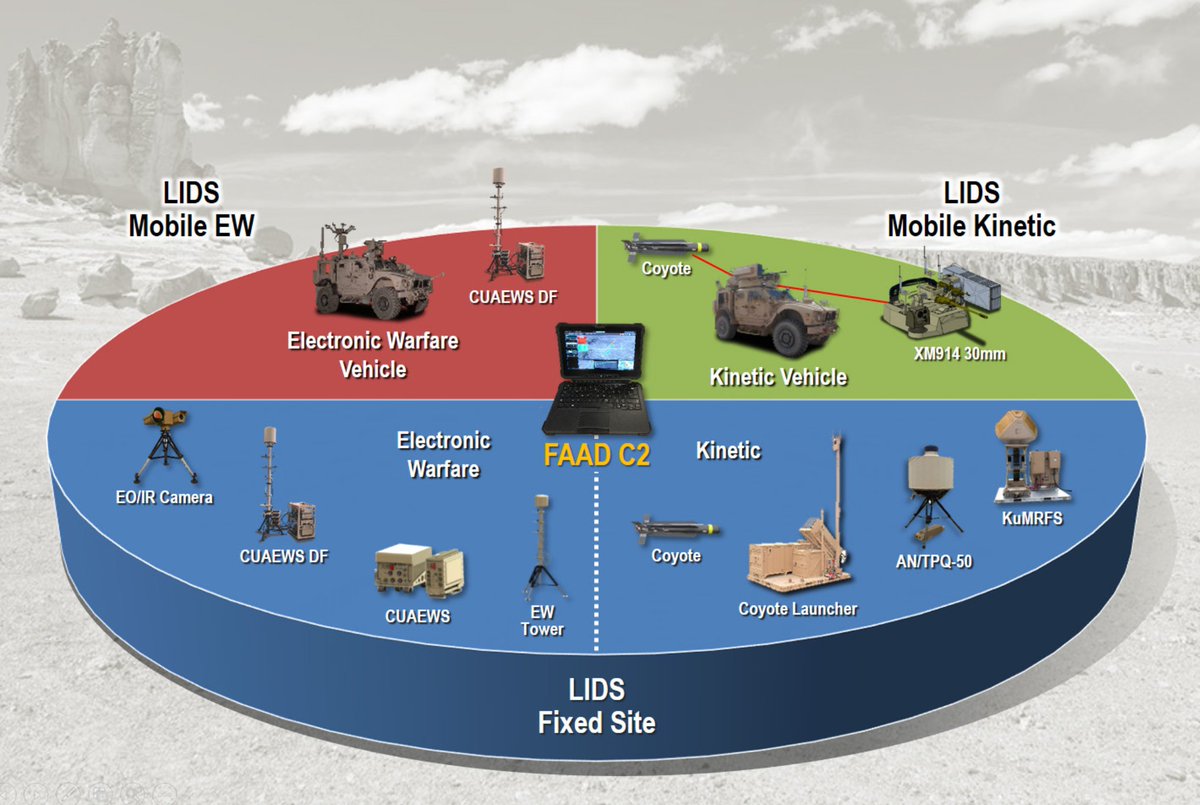
Adding additional interceptors & other low cost DE layers would not be very difficult. I won't be surprised if you have a dozen or so kinetic effectors for LIDS or other similar systems by end of decade.
Stop falling for the hype/myth around cheap G-3 One-way drones.
---END---
Stop falling for the hype/myth around cheap G-3 One-way drones.
---END---
LIDS system has been constantly in use since 2017 with some of its primary components (KuRFS) put through even greater usage to support the Counter RAM mission. While the Army has only begun fielding the Block 2+ missile it has used >30 already.
https://twitter.com/AirPowerNEW1/status/1660343198378754051
"LIDS has operated in CENTCOM since 2017. It is ruggedized for harsh conditions with continuous operational req. LIDS has been continuously refined for > 5 yrs using comprehensive feedback from test & theater ops. LIDS has had 3 major increments to capability.." ~ US Army 
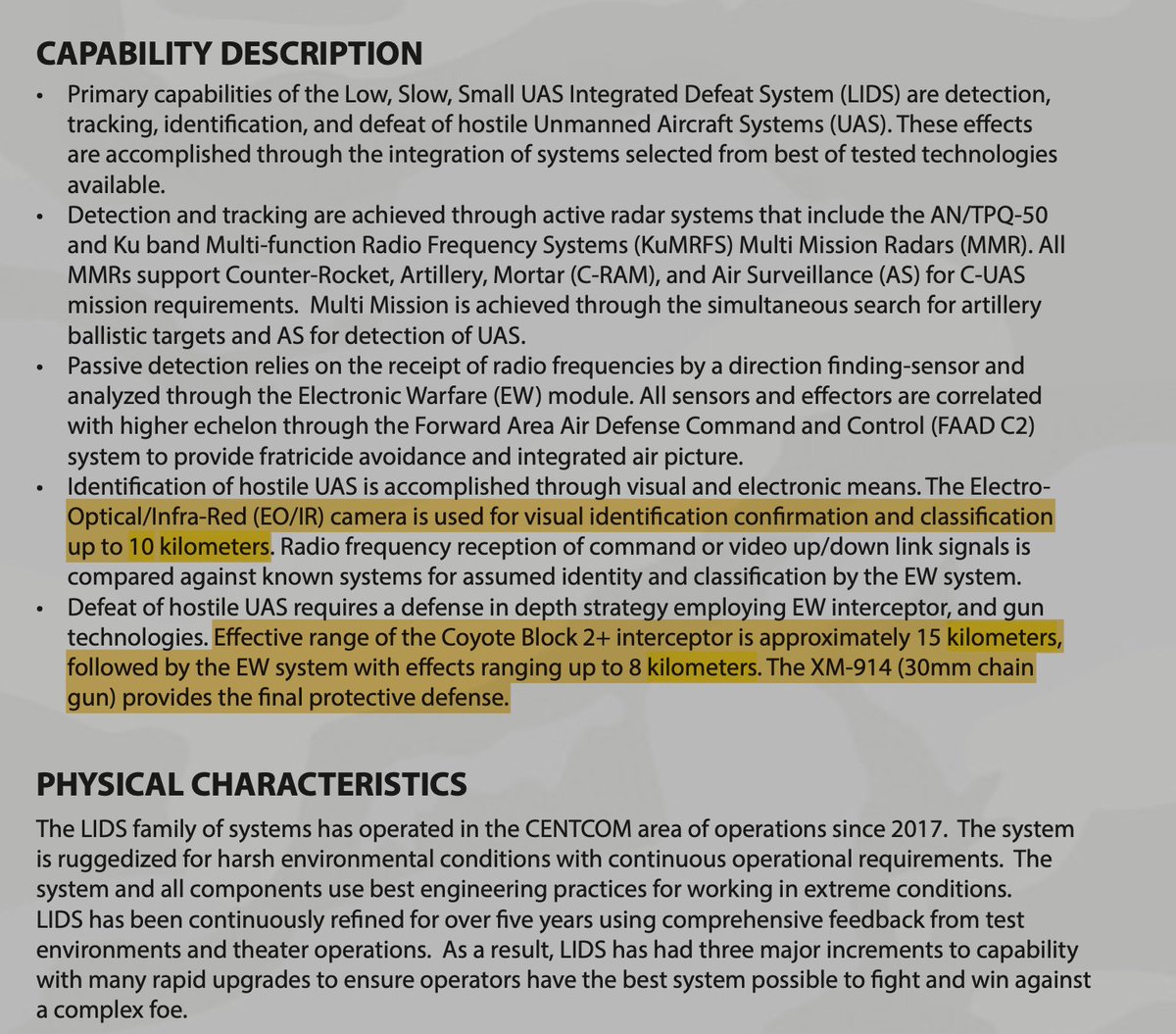
• • •
Missing some Tweet in this thread? You can try to
force a refresh

 Read on Twitter
Read on Twitter















